
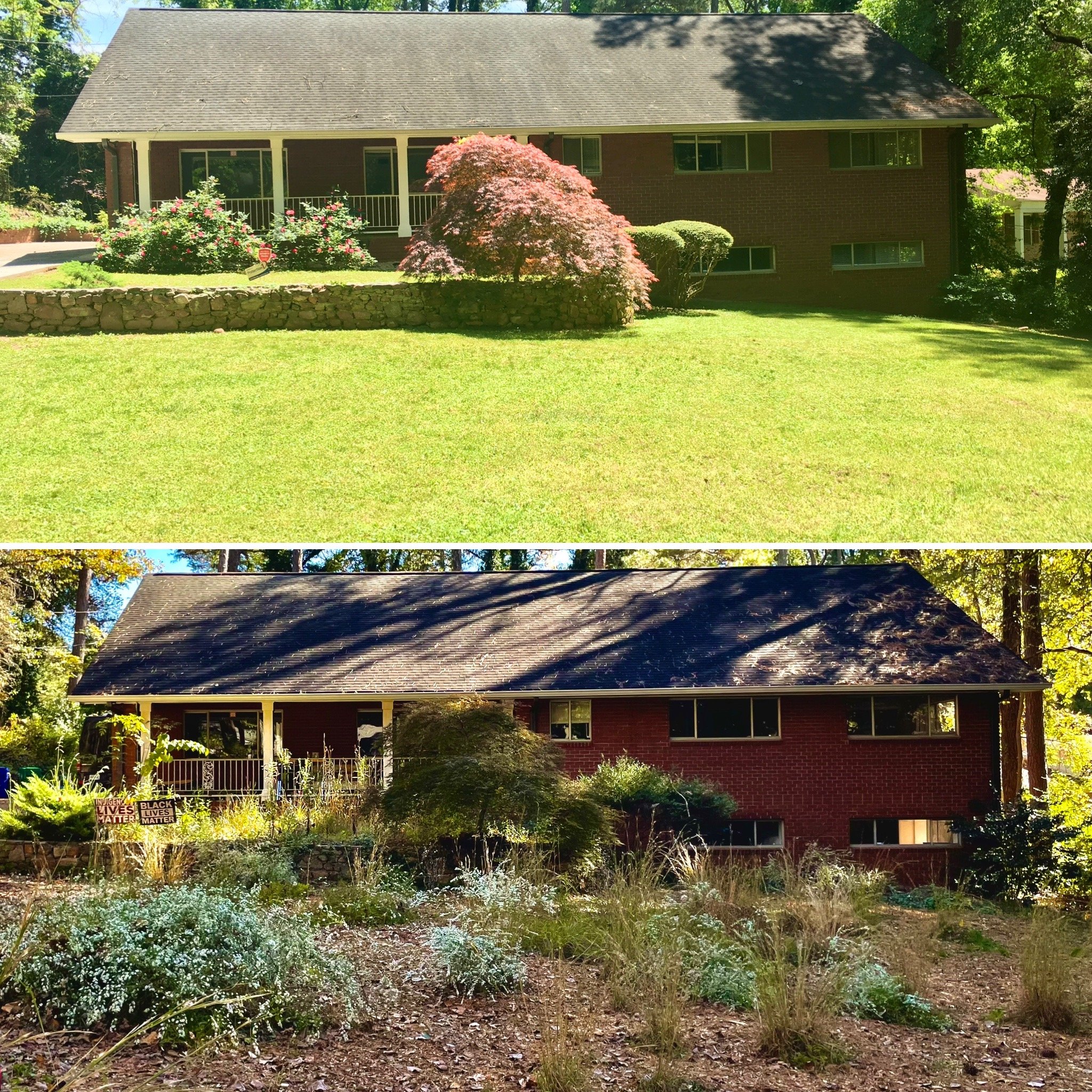
Native meadow conversion from lawn after ~3 years.

If there are healthy native soils on site, the first step to conversion will typically be to stop mowing so that the seed bank can grow back while we keep a close eye on what’s emerging.
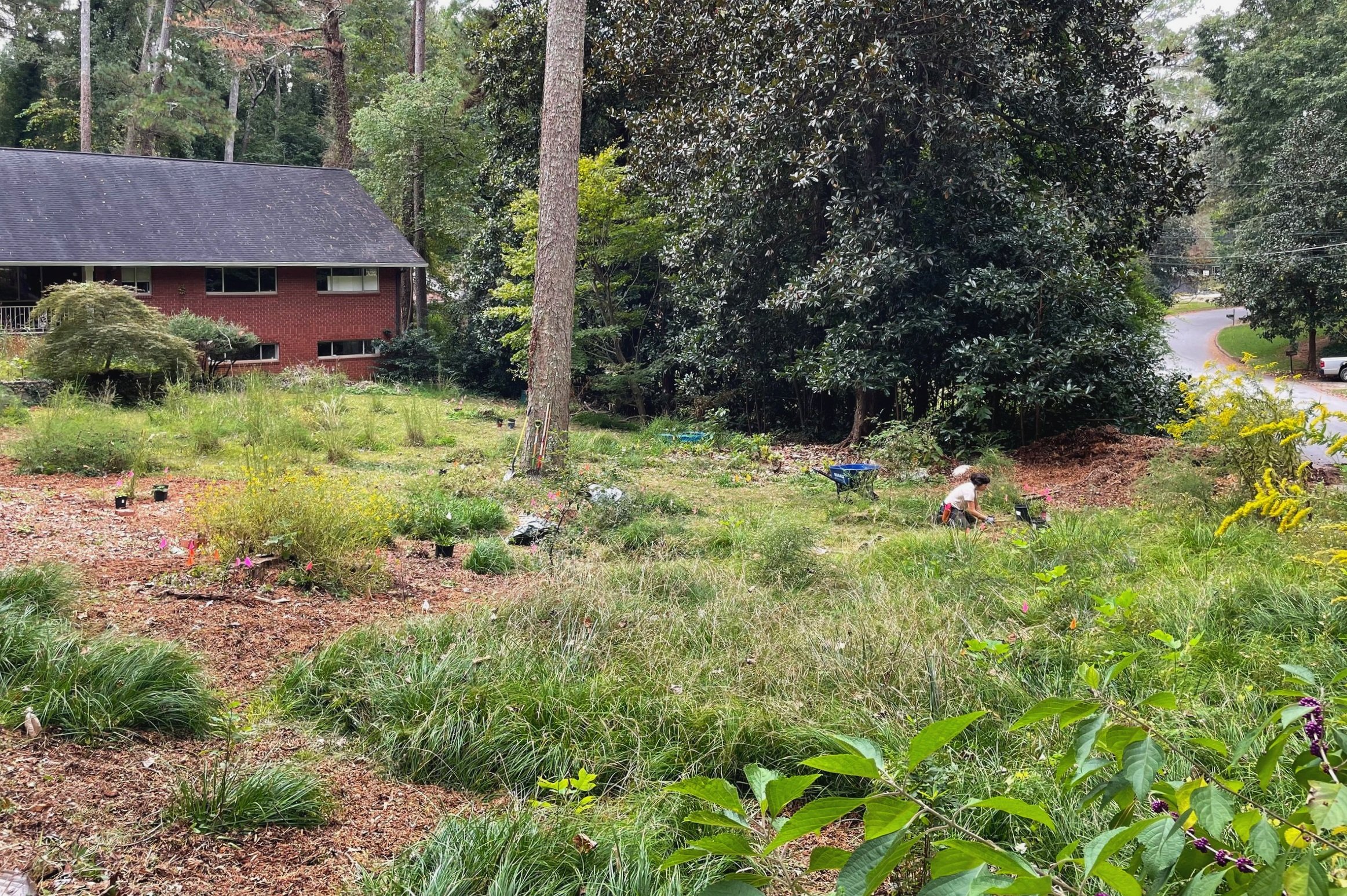
Targeted mowing is used to define various plant communities once the site’s native populations have re-emerged. Native plant installation matches the current populations to maximize biodiversity.
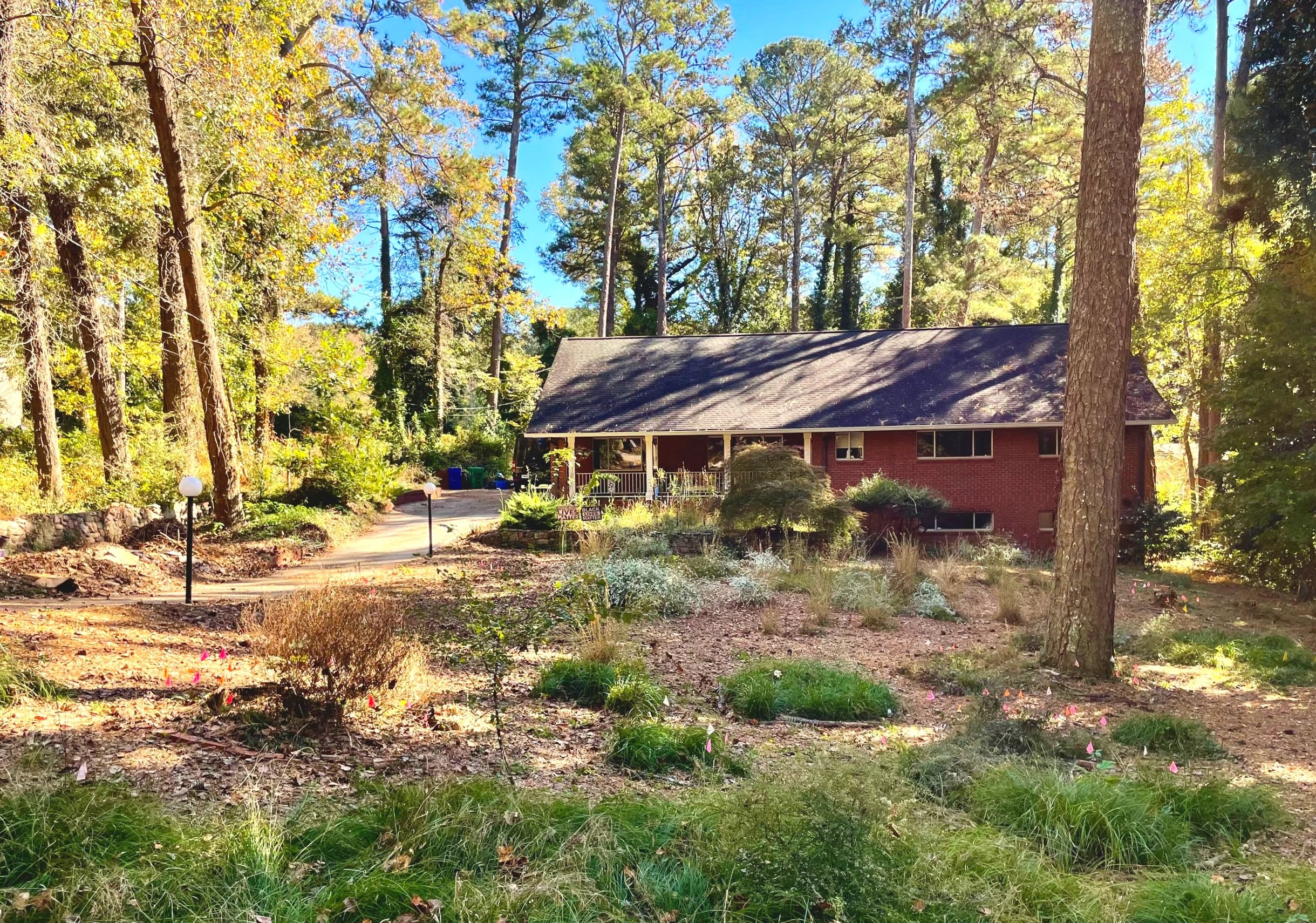
Woodchips reduce the need for management of herbaceous invasive plants and increase site accessibility.

Targeted mowing is not an option if there are no healthy native soils in the project area, as is common around newer constructions where the topsoil has been scraped away and sod has been installed directly onto the subsoil (clay). In these cases, we must build new healthy soil before introducing meadow communities, and outcompete the undesirable plants in the process.
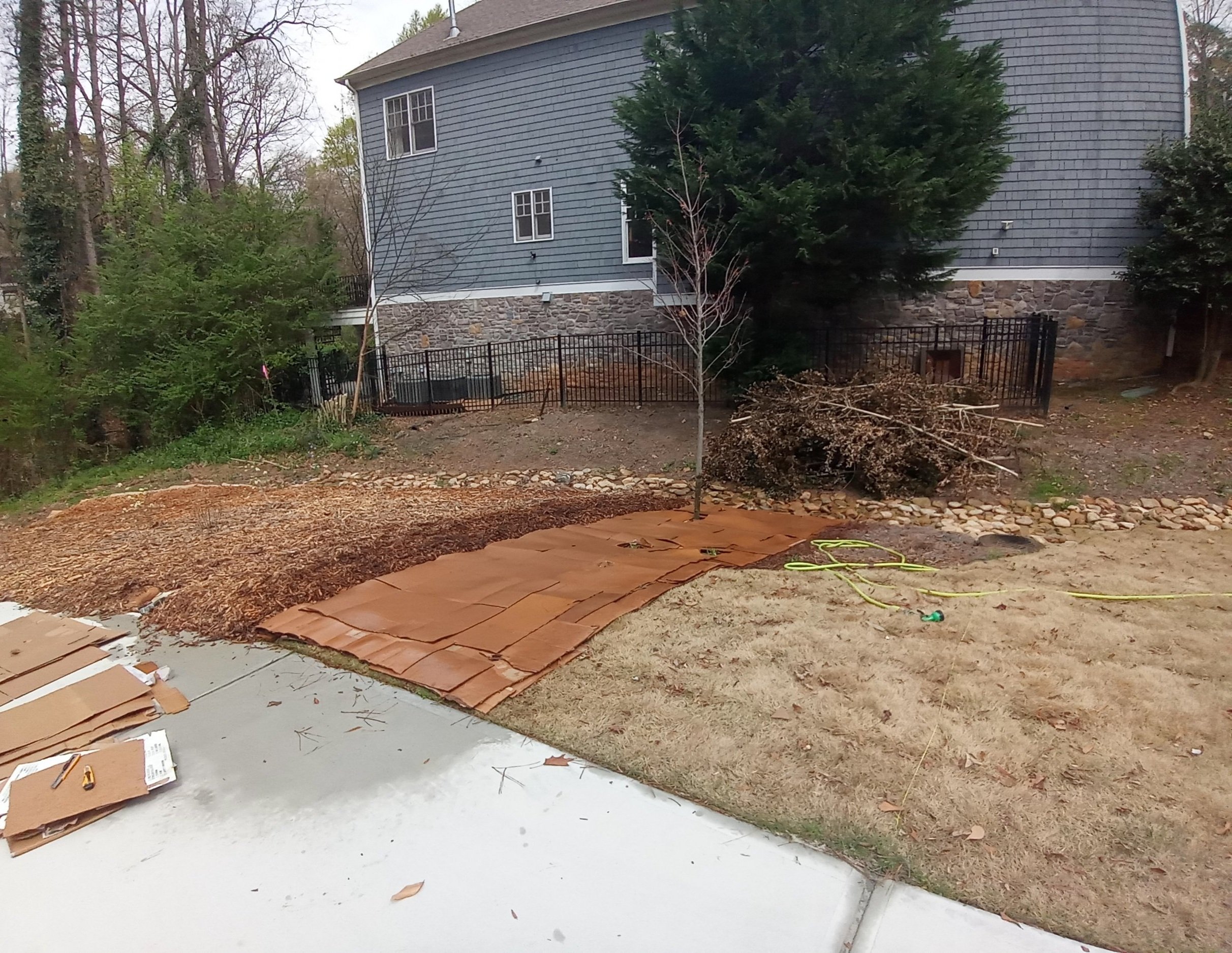
Sheetmulching with cardboard smothers most herbaceous plants when implemented properly and has the added benefit of biodegrading for further soil enrichment down the line.
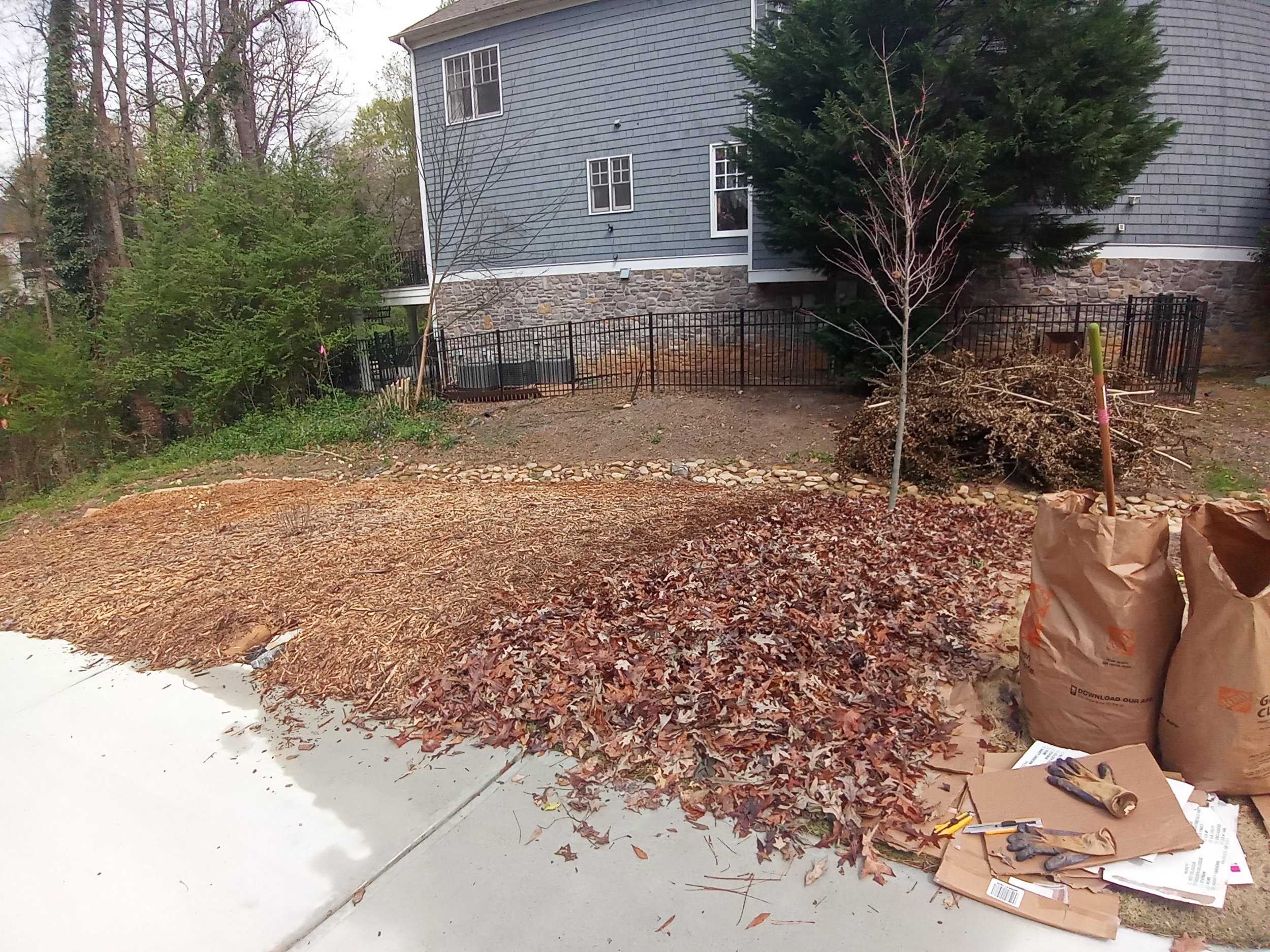
We layer leaf litter with woodchips over the cardboard, letting the soil build naturally by providing the necessary ingredients for a healthier microbiome.

Once complete, a thin layer of compost is added to the top before seeding with our first succession meadow species.
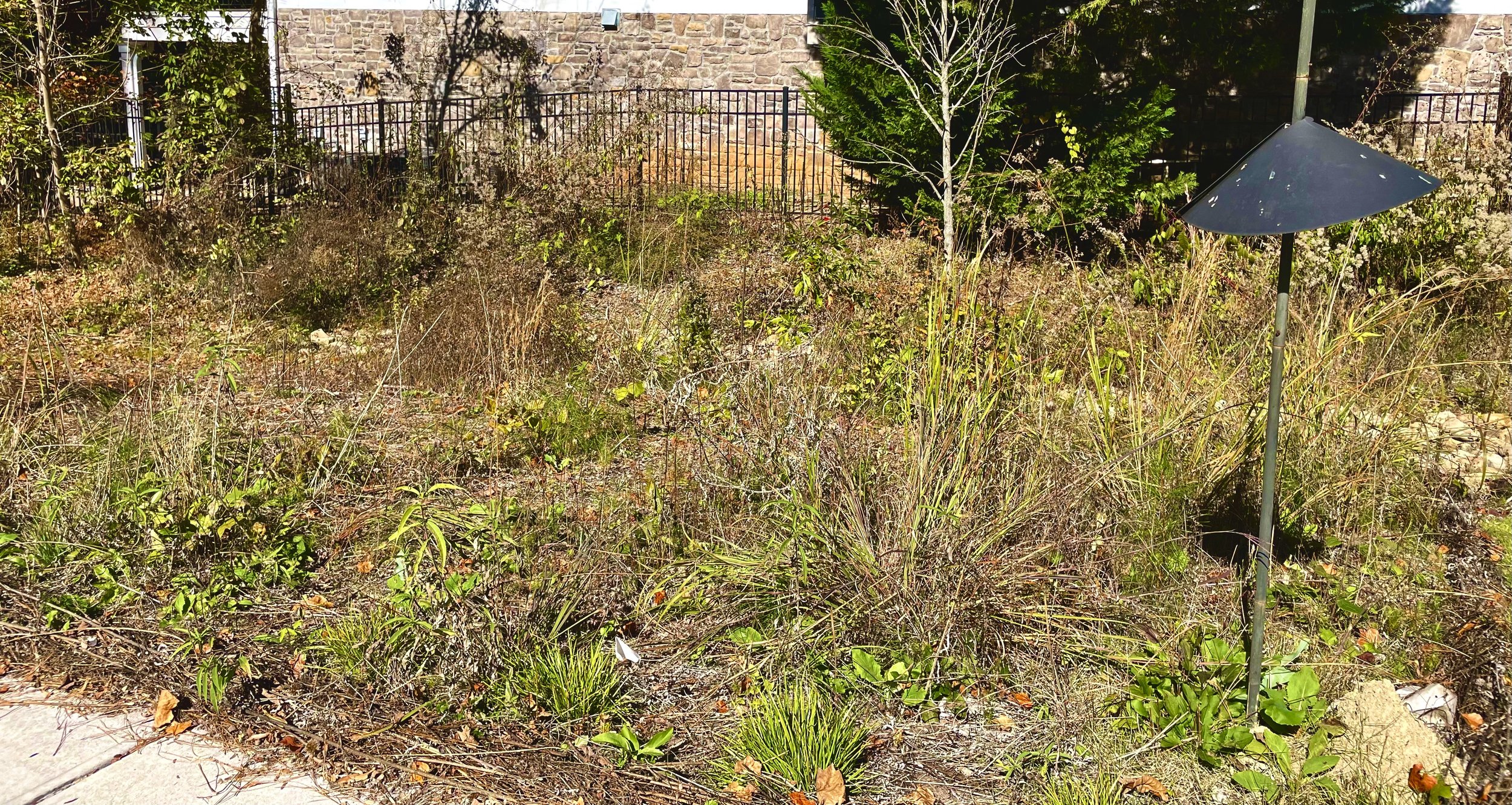
1 year after sheetmulching and 1 application of native seed, the sod has been successfully smothered and new soil is able to establish a native meadow.
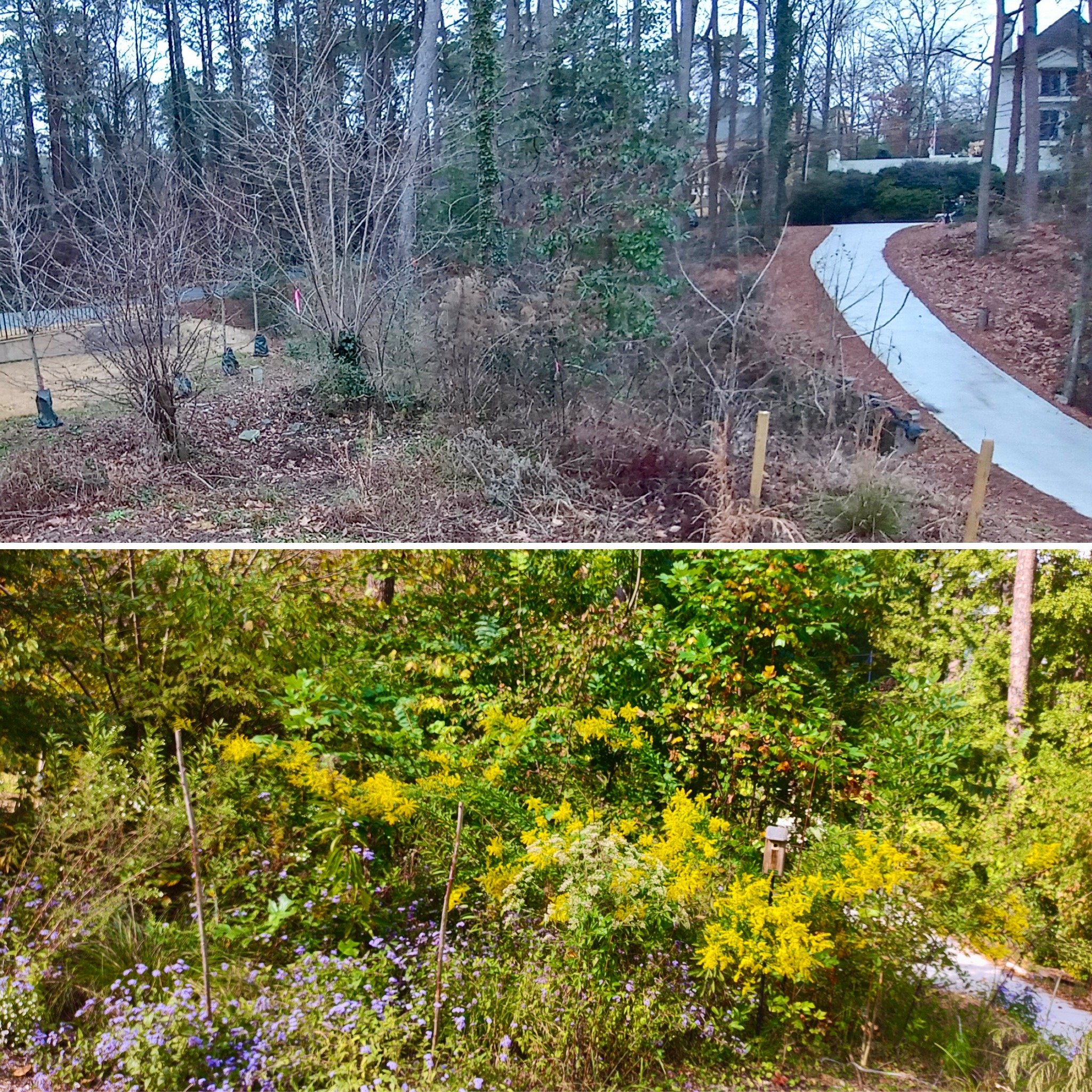
After 2 years of invasive control and 2 applications of native seed, native plant communities have established and the area shows a dramatic improvement in biodiversity.
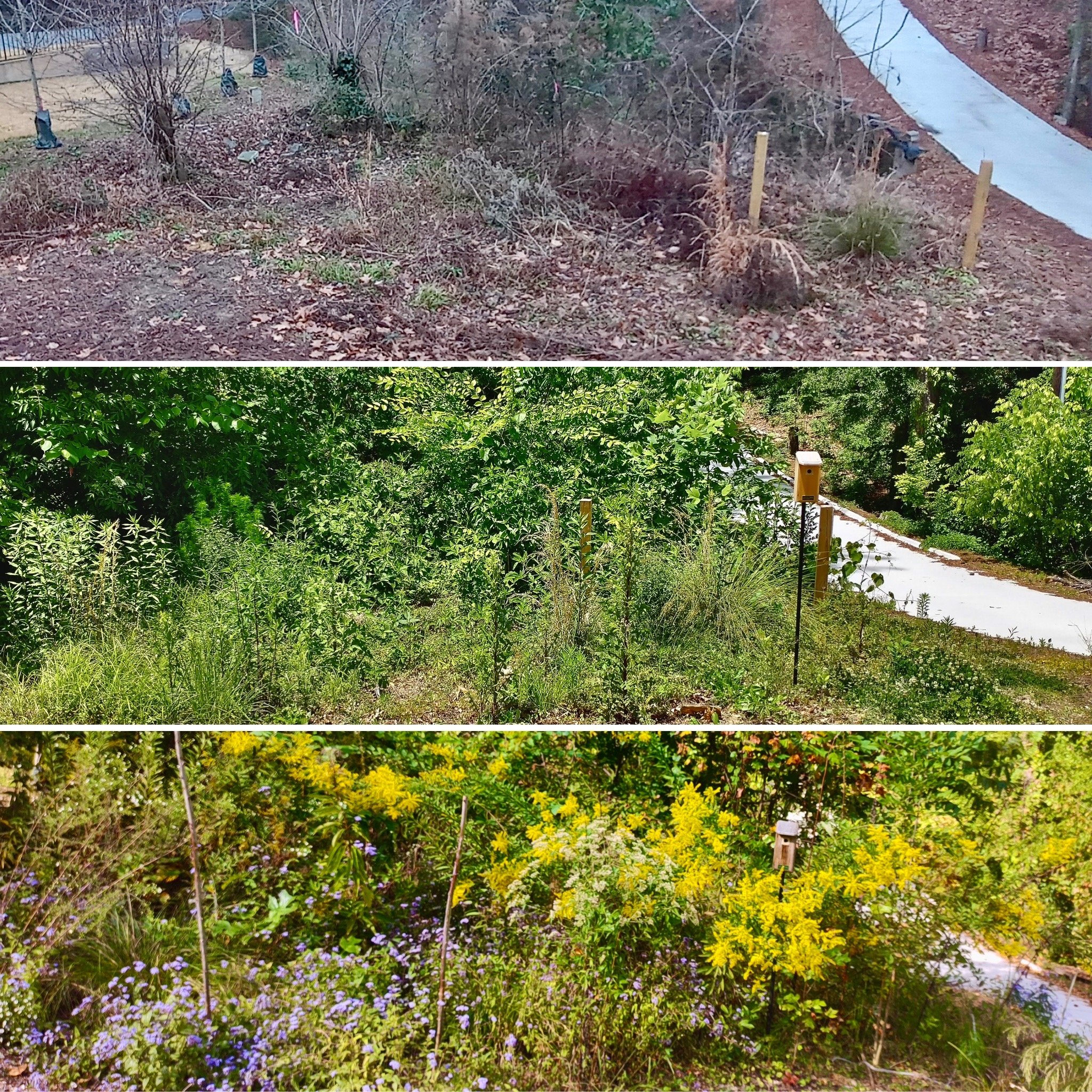
Transition between years can look messy, but is necessary to allow native plant communities to fill in the niches.
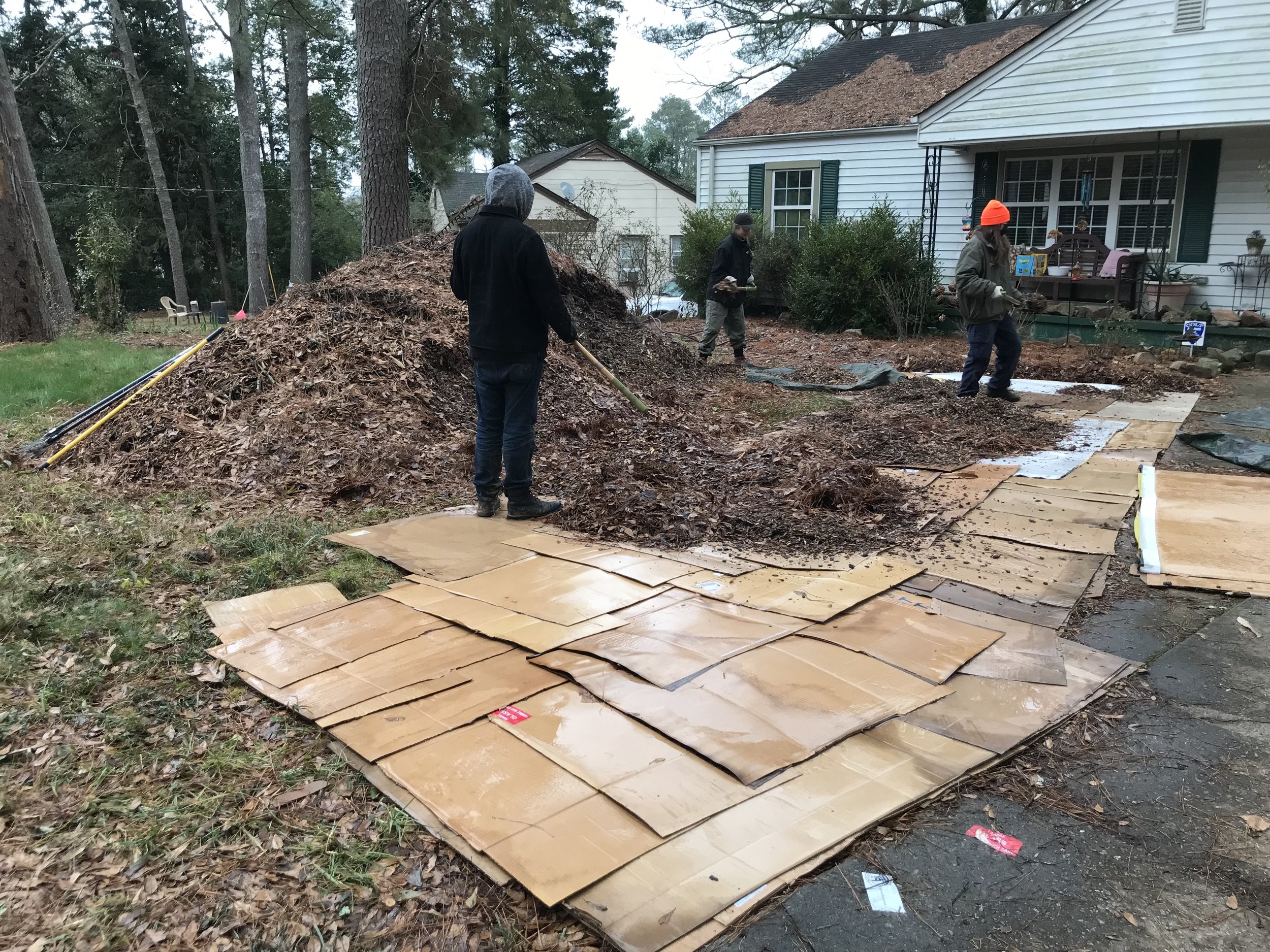
Sheetmulching aggressive herbaceous invasive plants, such as liriope, prevents damage that causes erosion by eliminating the need for most digging.
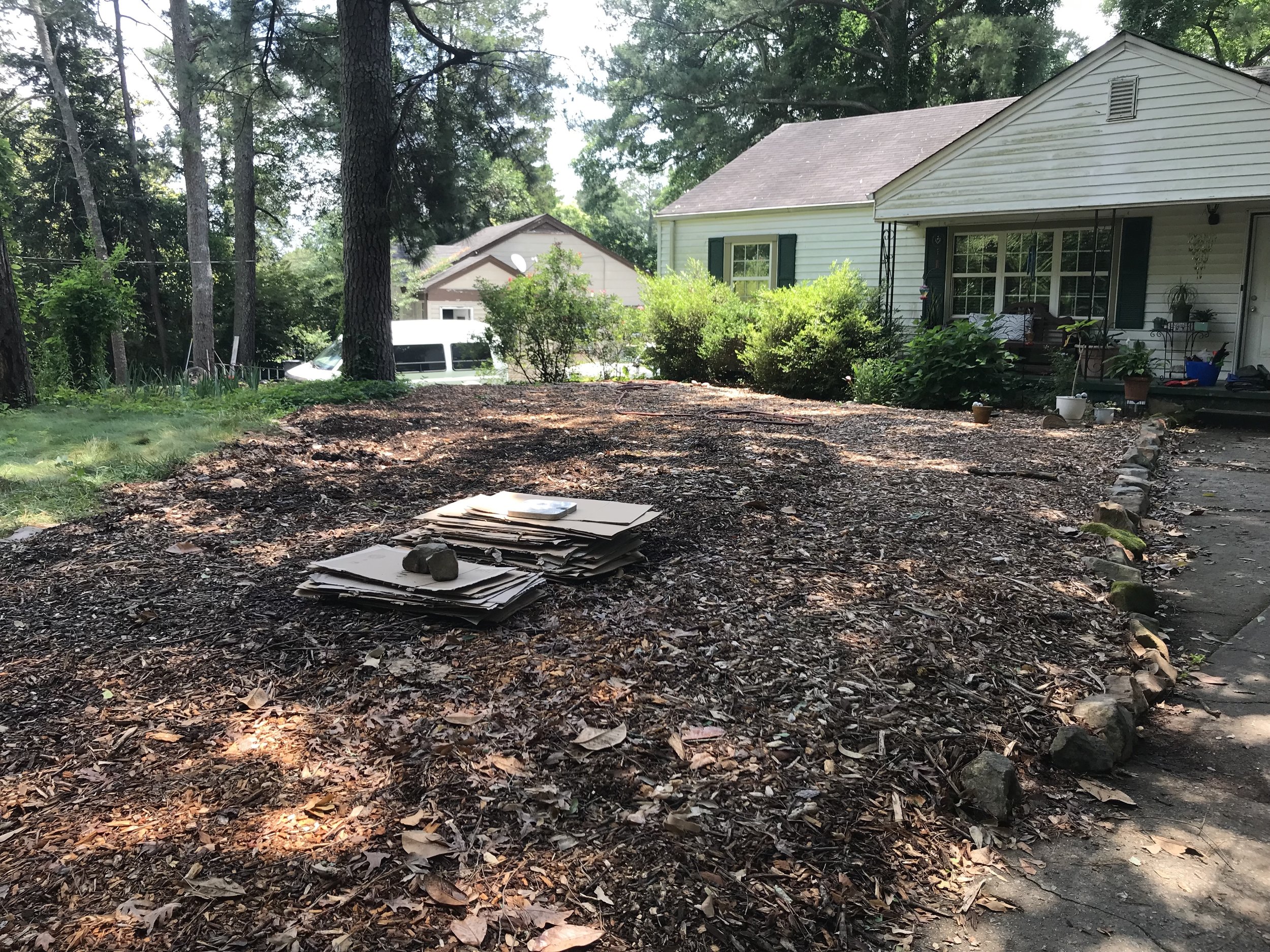
Once the targeted invasive species is sheetmulched, meadow preparation and plant installation can begin.
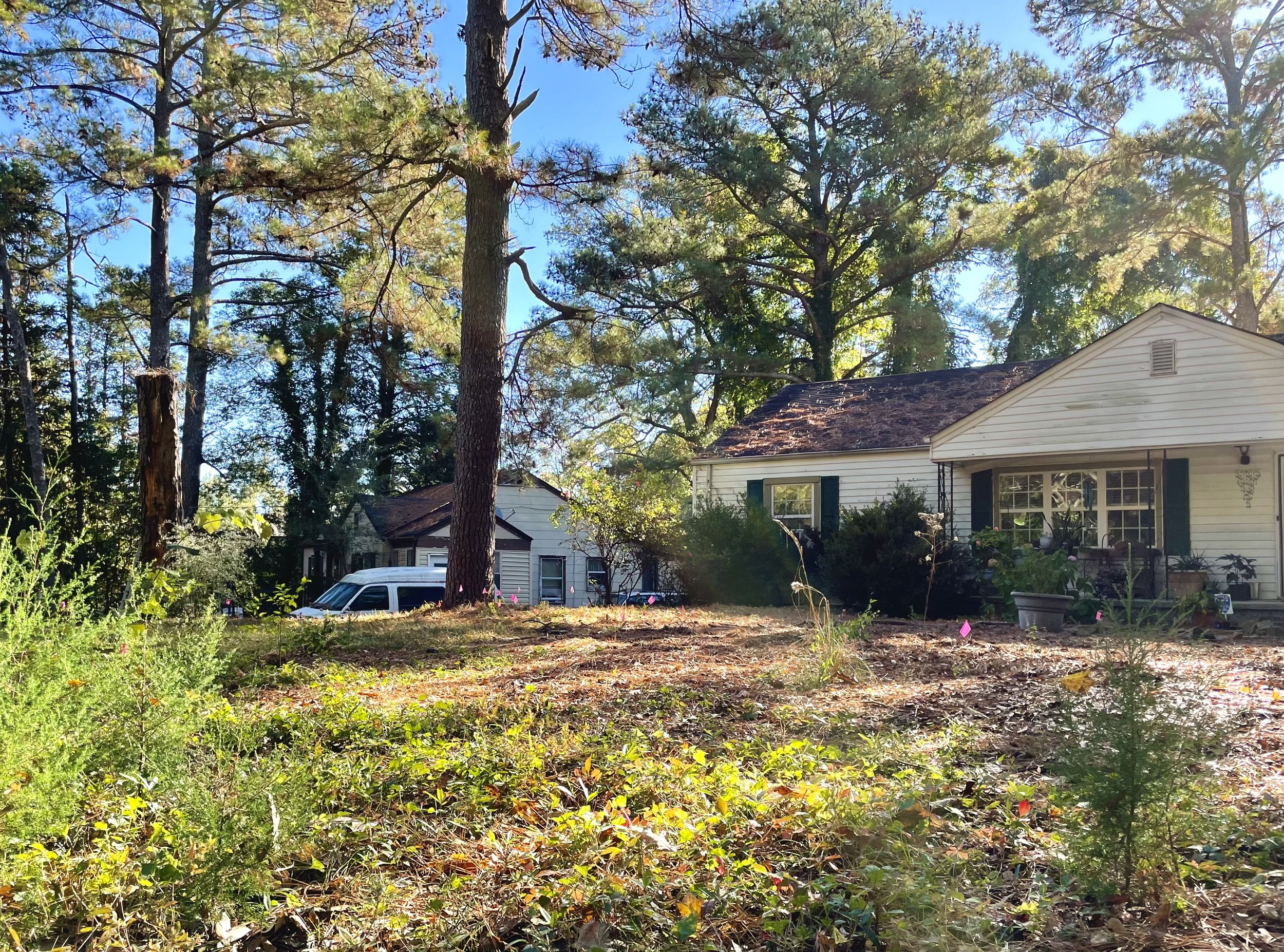
1 year after sheetmulch completion and native plant installation, new plant communities can be curated to enhance the space.
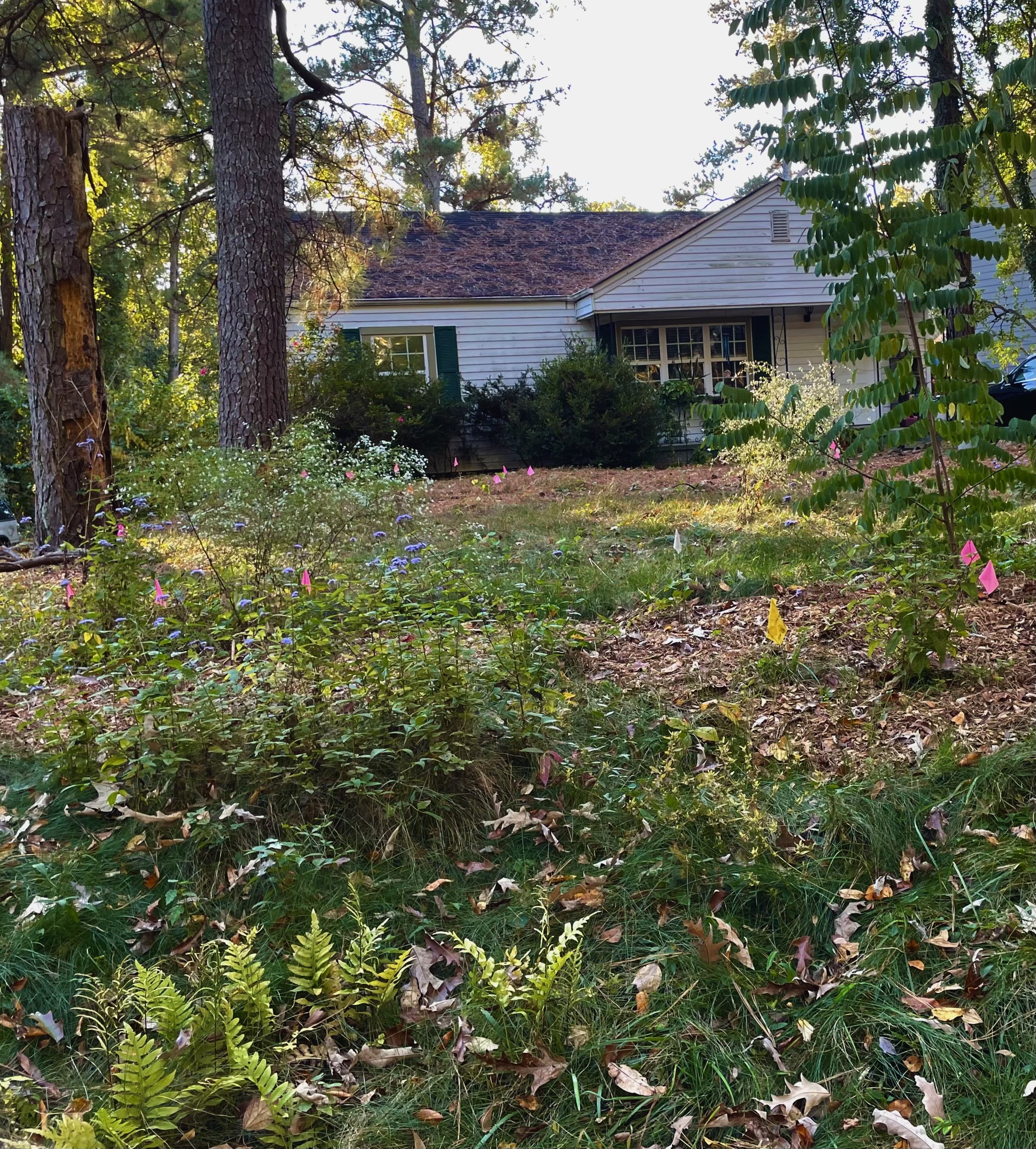
Spontaneous native populations that reveal themselves once invasive populations are controlled like the netted chain fern pictured, are supported with additional native plantings.
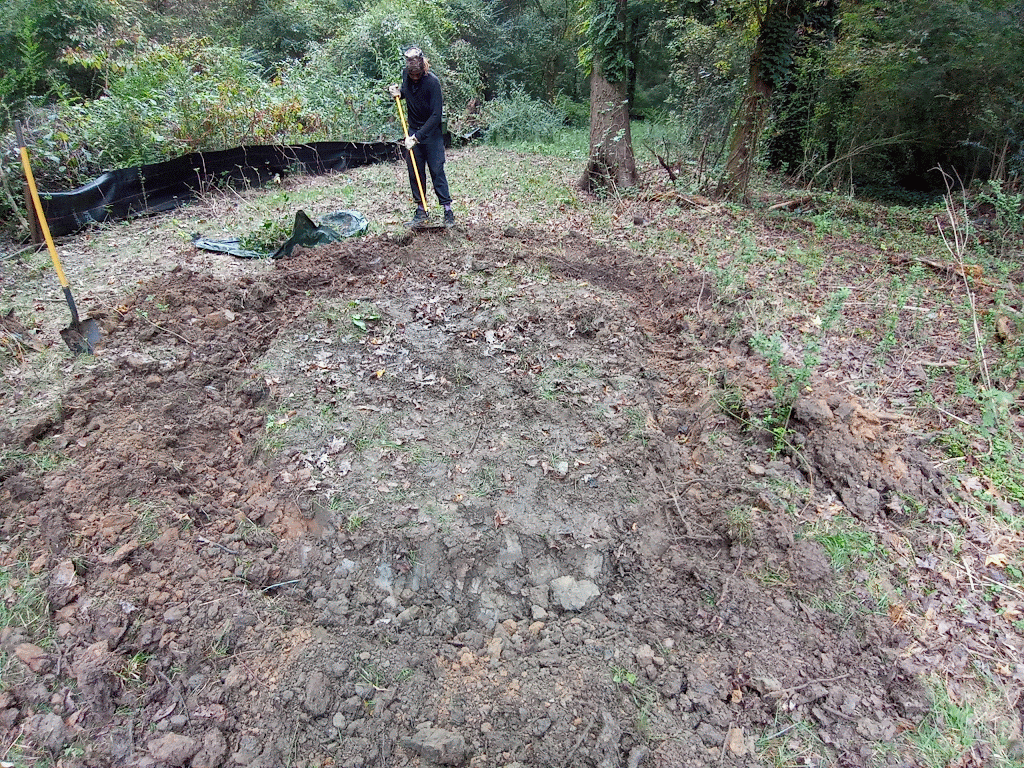
Rain beds are effective at regulating water by concentrating infiltration and saturation into a specific area, while preserving habitat for valuable wildlife.
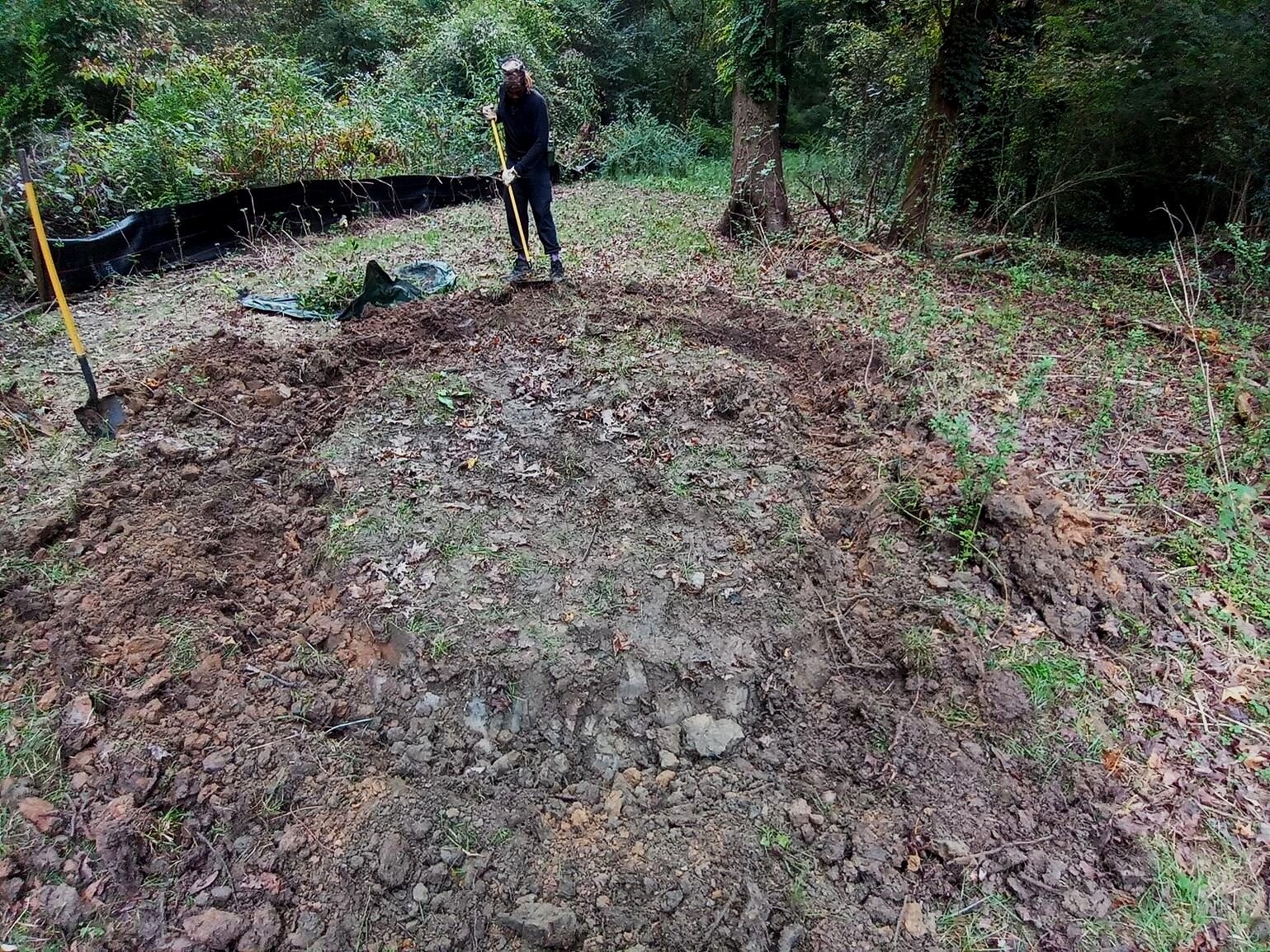
Rain beds are depressed areas where water can collect, simulating a marsh or wetland micro-ecology. By hollowing a pronounced depression in the lowest spot, water that had been collecting nearby is able to flow into the bed instead of muddying up the area.
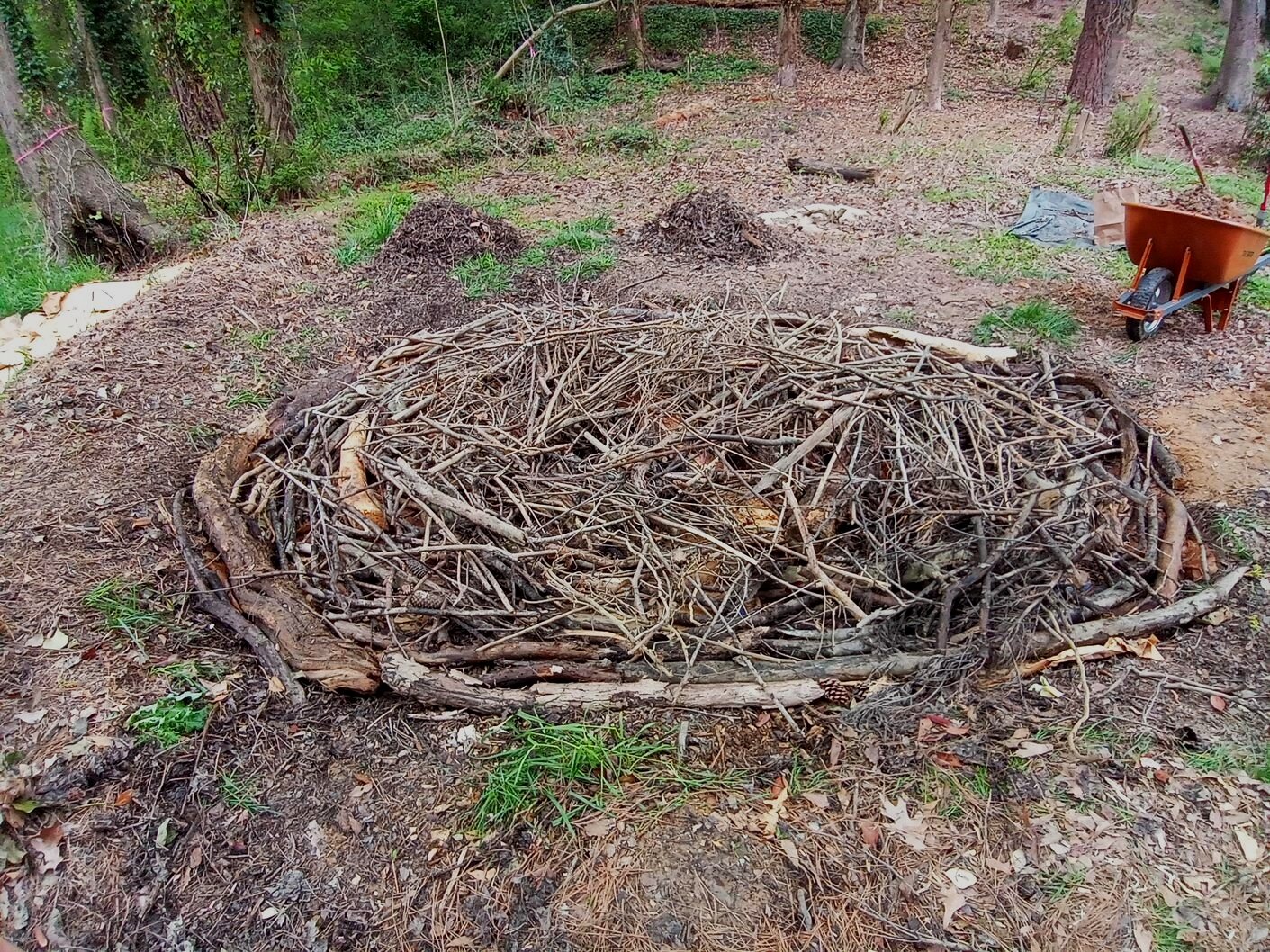
As the wood decomposes, the rain bed will sink into a bowl shape.

Once completed, the rain bed is planted with water loving native plants that can also tolerate dry periods such as swamp sunflower, Joe-pye, soft rush, spiderwort, and others.




















